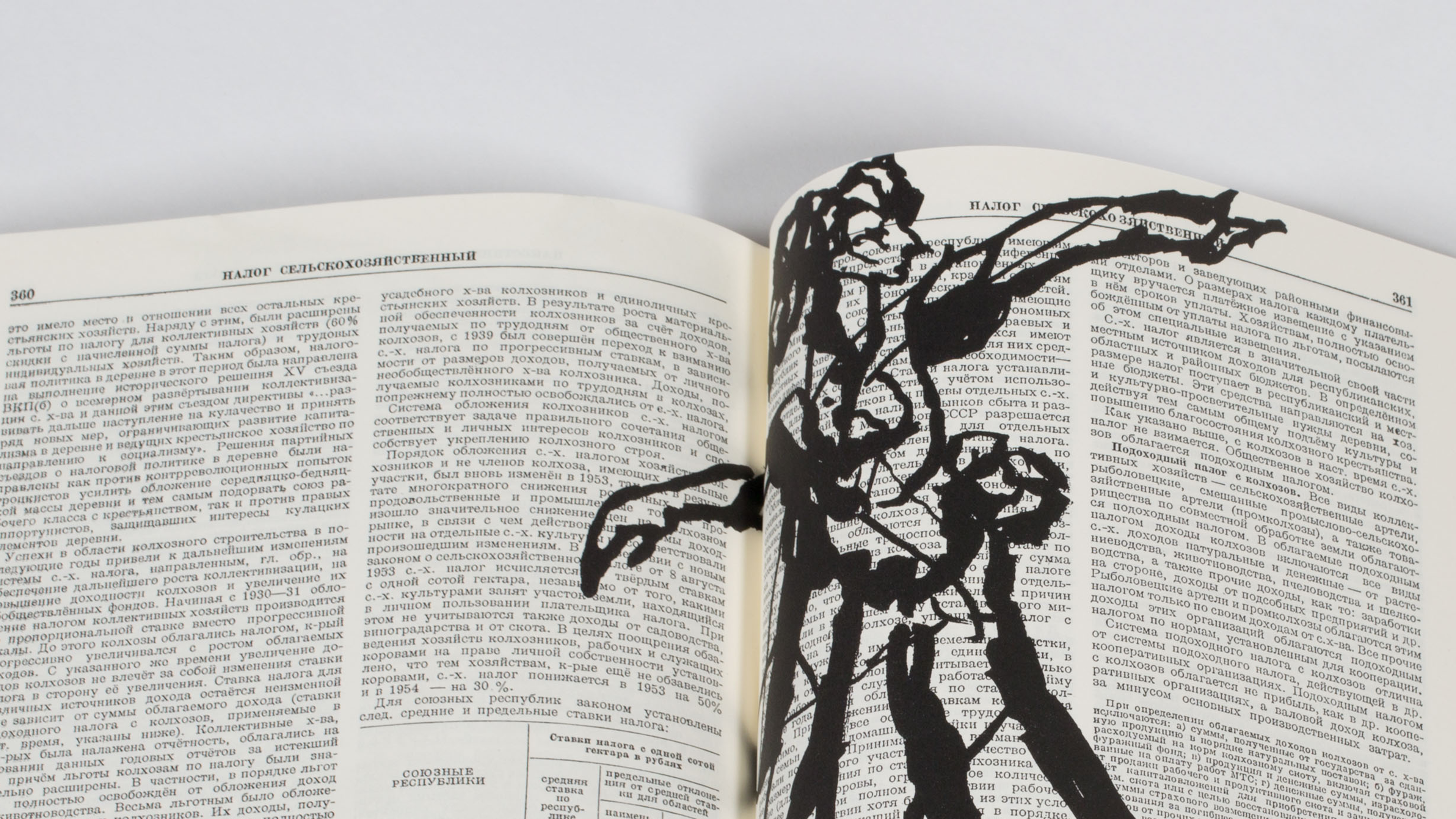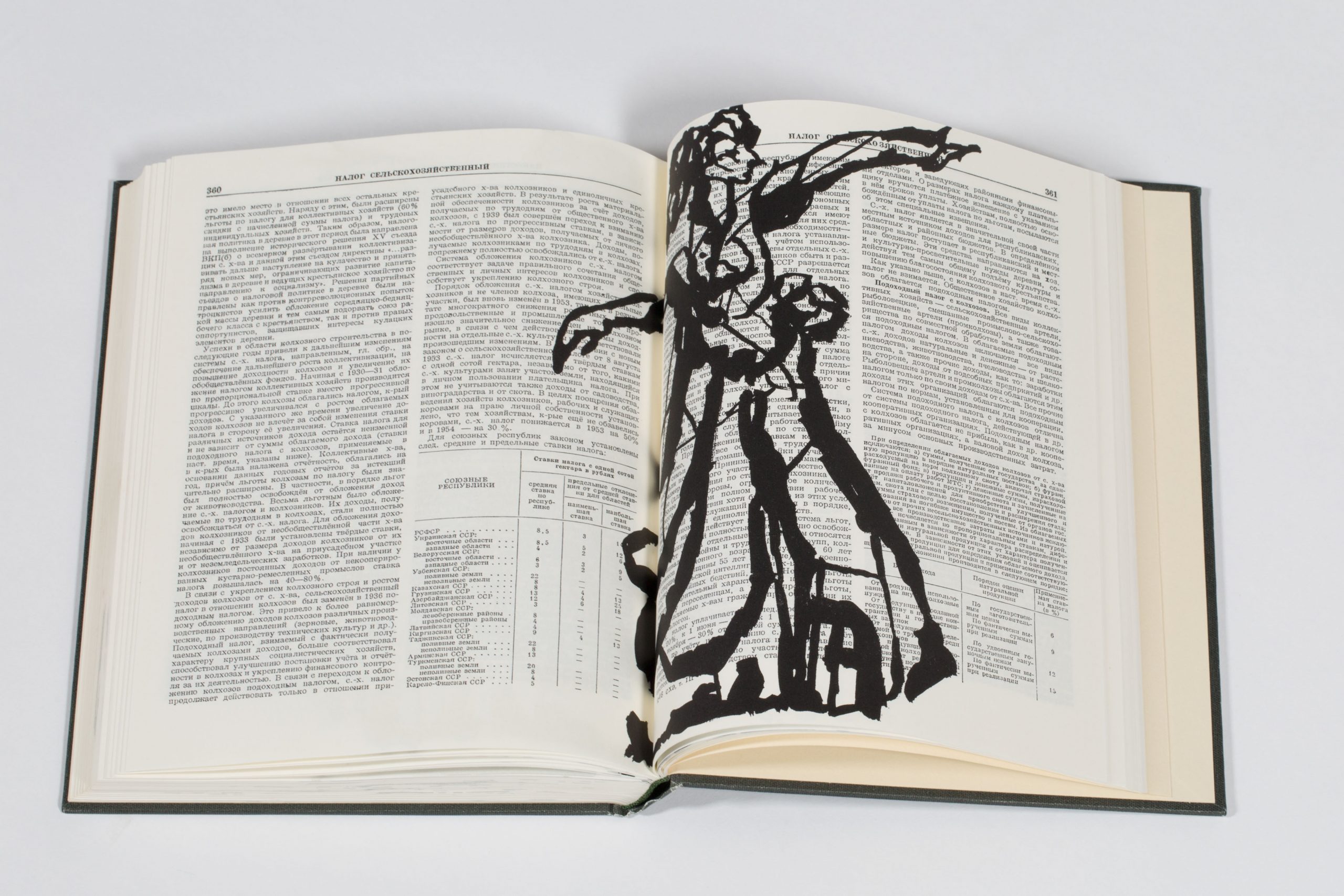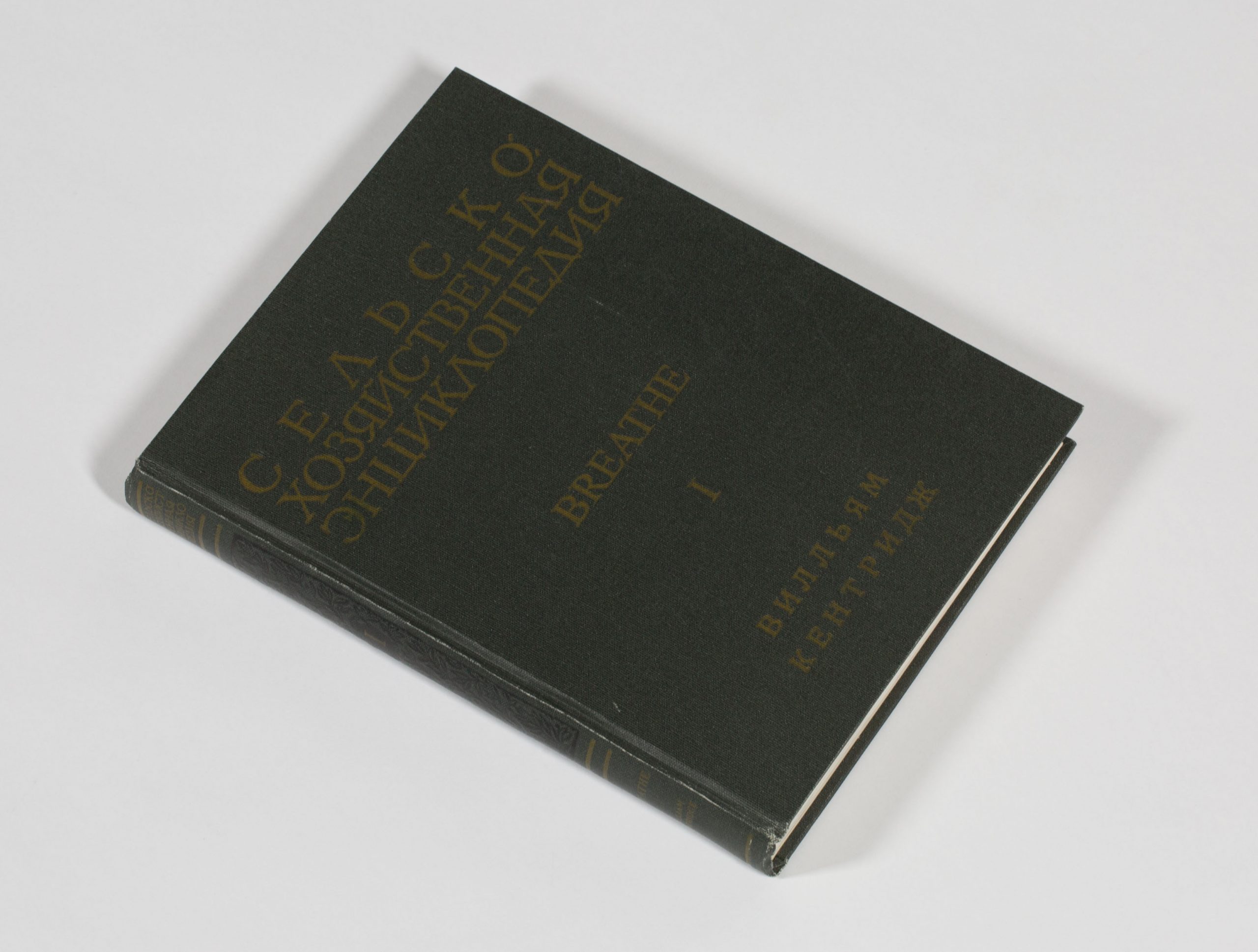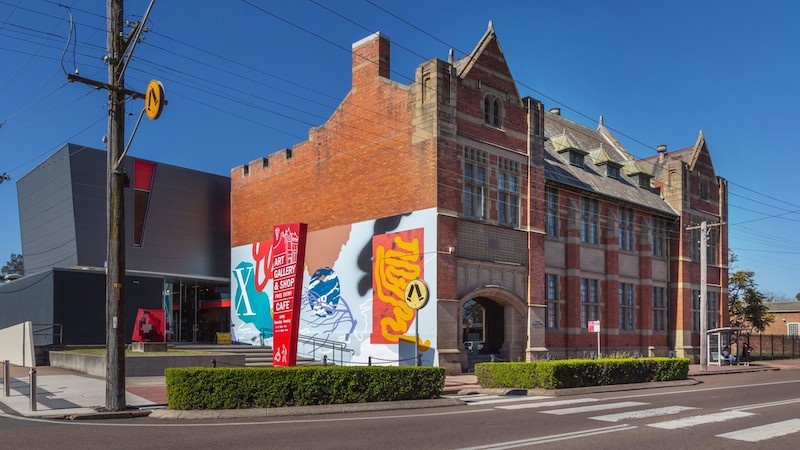A Real Page Turner
Breathe, 2008
In William Kentridge’s Breathe (2008) a dancing figure, drawn in black India ink, pirouettes across the pages of an old book. Using the nineteenth century technology of flip book animation, Kentridge (1955-) makes the image come alive with each turn of a page, creating a 34-second animation that makes us think about the differences between text and image, reading and seeing, the mind and the body.
Viewed individually, each image on the page represents an isolated fragment, but when seen in cascading succession, they come together in a coherent sequence of choreography. For Kentridge, this urge to construct coherence from fragments is a fundamental characteristic of humanity: ‘this insatiable need to make sense of the world as it presents itself to us.’
One way of making sense of the world is through our representations of it – through words or images contained in books such as the 1953 Russian encyclopedia that Kentridge draws on in Breathe. Kentridge has compared books to our minds, filled with thoughts that come and go like entries in a dictionary or an encyclopedia. He complicates this analogy in Breathe by working from an obsolete Soviet-era book in a language foreign to him. The information it contains is outdated and made illegible by the figure drawn upon it, and each page becomes a mechanism for the animation rather than a conveyor of knowledge.
Is the figure pirouetting in Breathe dancing on the grave of Soviet authoritarian thinking? Or is it an embodiment of an expressive spirit that can’t be contained in words? Perhaps is it a reminder of the many ways of thinking, being and representing available to humanity – of the differences between the world as it is interpreted though the mind, and the world experienced through our living and breathing bodies.






